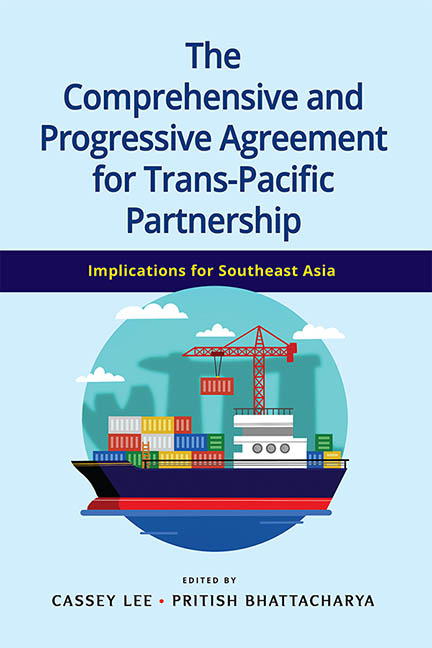Book contents
- Frontmatter
- Contents
- Preface
- Abbreviations
- About the Contributors
- 1 Introduction
- 2 The Economics of the CPTPP and RCEP: Asia Pacific Trade Agreements without the United States
- 3 The TPP and CPTPP: Truths about Power Politics
- 4 The Investment Chapter and ISDS in the CPTPP: Lessons from and for Southeast Asia
- 5 Intellectual Property in the CTPP and Access to Medicines A Thai Perspective
- 6 New Rules for State-Owned Enterprises in the CPTPP
- 7 Impact of the CPTPP on Japanese Manufacturing Affiliates in ASEAN
- 8 Reassessing Malaysia’s Export Opportunities in the TPP and CPTPP
- 9 Impact of the CPTPP on Vietnam
- 10 Should Thailand Join the CPTPP?
- 11 Indonesia, the TPP and CPTPP: Hold Your Breath
- Index
6 - New Rules for State-Owned Enterprises in the CPTPP
Published online by Cambridge University Press: 08 October 2021
- Frontmatter
- Contents
- Preface
- Abbreviations
- About the Contributors
- 1 Introduction
- 2 The Economics of the CPTPP and RCEP: Asia Pacific Trade Agreements without the United States
- 3 The TPP and CPTPP: Truths about Power Politics
- 4 The Investment Chapter and ISDS in the CPTPP: Lessons from and for Southeast Asia
- 5 Intellectual Property in the CTPP and Access to Medicines A Thai Perspective
- 6 New Rules for State-Owned Enterprises in the CPTPP
- 7 Impact of the CPTPP on Japanese Manufacturing Affiliates in ASEAN
- 8 Reassessing Malaysia’s Export Opportunities in the TPP and CPTPP
- 9 Impact of the CPTPP on Vietnam
- 10 Should Thailand Join the CPTPP?
- 11 Indonesia, the TPP and CPTPP: Hold Your Breath
- Index
Summary
Introduction
On 4 February 2016, twelve signatory Parties—Australia, Brunei, Canada, Chile, Japan, Malaysia, Mexico, New Zealand, Peru, Singapore, the United States and Vietnam signed the Trans-Pacific Partnership (TPP) Agreement. However, on 23 January 2017, President Trump signed a presidential memorandum to direct the United States Trade Representative (USTR) to withdraw the United States as a signatory to the TPP. Despite the initial uncertainties created by the US withdrawal, the eleven remaining countries signed the Comprehensive and Progressive Agreement for Trans-Pacific Partnership (CPTPP) in March 2018.
While the TPP has since been given a new name, the agreement text has remained largely the same. It can therefore be argued that the current CPTPP text was mainly based on the US free trade agreement (FTA) model as the United States was previously the major demandeur for most of the thirty constituent chapters. It was during the TPP negotiations that the United States had introduced a new standalone chapter, Chapter 17, to regulate state-owned enterprises (SOEs) and designated monopolies of the signatory Parties. The eleven CPTPP members had agreed to not renegotiate the text of TPP Chapter 17; instead, the current CPTPP Chapter 17 has minor amendments in terms of some of the Parties’ date of enforcement for their commitments as laid out in the chapter annexes. Currently, Chapter 17 contains the most comprehensive trade-based regulations on SOEs. This has two key implications. First, it may set the standard for future SOE rules in trade agreements, including FTAs. Second, countries that are keen to be signatory Parties to the CPTPP in the future will see their SOEs being regulated by Chapter 17.
This study is organized as follows. The next section discusses the international rules on SOEs and aims to answer three questions: Why are there international rules on SOEs? What are the current international rules on SOEs? And how are SOE rules incorporated into FTAs? The third section then discusses the genesis of CPTPP Chapter 17 on SOEs and designated monopolies.
- Type
- Chapter
- Information
- Publisher: ISEAS–Yusof Ishak InstitutePrint publication year: 2021

